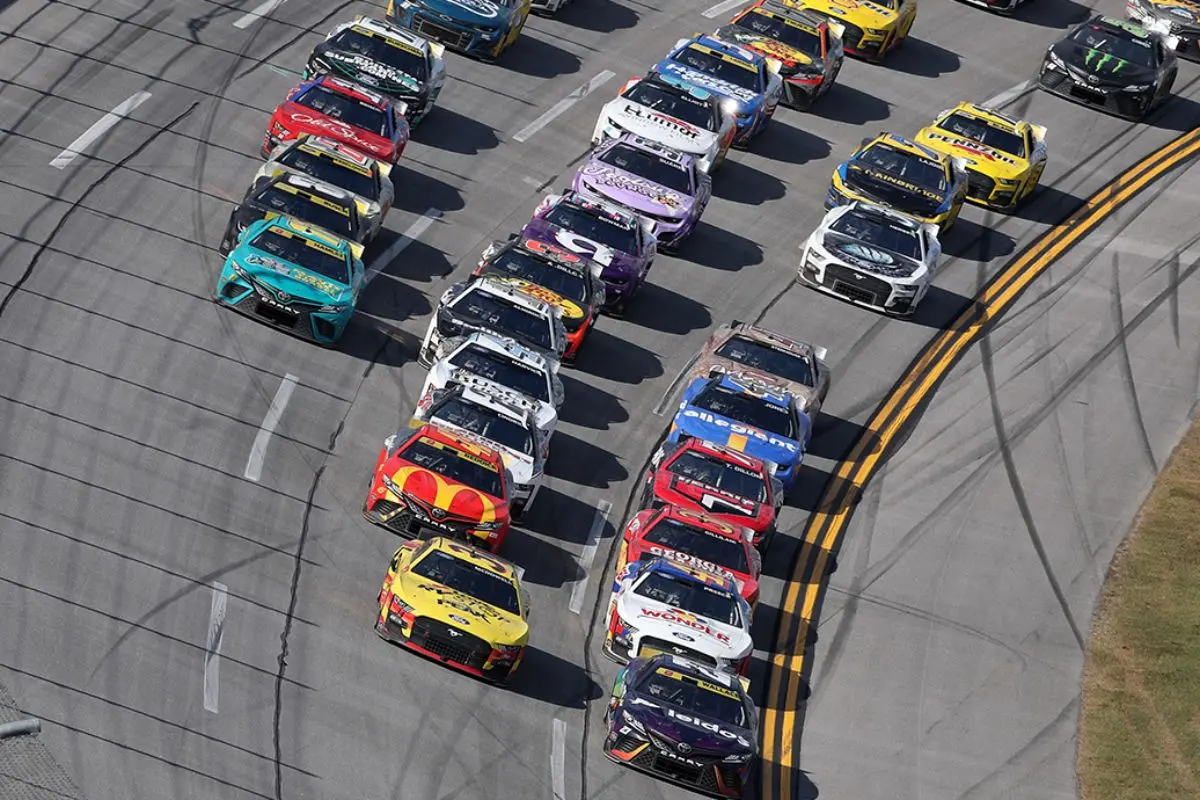A new rule in the NASCAR rulebook has caught attention. It changes how cars are selected when too many try to enter a race. The update could affect open teams trying to make the grid, especially during tight entry lists. This change comes as some teams continue their legal fight with NASCAR, raising questions about timing and motive. While the update may seem small, it’s creating big reactions—and it’s happening right as the courtroom battle heats up.
Key Highlights
-
NASCAR updated its rule book to clarify how Open teams make the race field.
-
Up to six Open teams will now be admitted based on owner points.
-
The change comes as 23XI Racing and Front Row Motorsports continue their legal battle over charter status.
-
The Driver Ambassador Program has now drawn criticism in the court filings.
-
Teams say the program threatens team control and sponsor alignment.
New Entry Rule Protects Open Teams from Field Cuts
23XI Racing and Front Row Motorsports, currently operating as Open teams in the NASCAR Cup Series, are no longer facing the threat of being excluded from upcoming races due to oversubscribed entry lists. NASCAR has quietly updated its rule book with a provision that ensures field access for Open teams based on their position in the owner points standings.
The revised rule, found in the Entry Requirements section, now states: “NASCAR, at its sole discretion, may elect to limit the number of entries for a race to 40. In such instances, Open Teams will be determined based on the Team Owner Point standings.” A related clause in the starting grid eligibility section confirms that up to six Open teams can qualify based on these standings.
While no more than 40 teams are expected for the upcoming event at Indianapolis Motor Speedway, the change comes with larger implications. The move offers short-term relief for 23XI Racing and Front Row Motorsports, both of which are currently embroiled in a legal dispute with NASCAR over the charter system.

Court Filing Expands Legal Scope, Targets Driver Ambassador Program
As part of their ongoing litigation, 23XI Racing, Front Row Motorsports, and Race Team Alliance executive Curtis Polk recently filed an official response to NASCAR’s amended counterclaim. The court filing reasserts their core allegation—that NASCAR exercises outsized control over the sport’s financial structure and team independence.
But this latest response introduces a new concern: the Driver Ambassador Program (DAP), which launched in 2025 as a NASCAR-led marketing initiative. Through DAP, Cup Series drivers receive direct financial incentives from NASCAR for participating in off-track promotional work such as media appearances, interviews, and branded content. A mobile app tracks points earned, with payouts ranging from a $7,500 base to as much as $2 million for the most active participants.
23XI/FRM/Curtis Polk have filed answer to NASCAR's amended counterclaim. Mostly same arguments. One nugget — some teams believe Driver Ambassador Program, where NASCAR pays drivers directly based on how many/what appearances they do, interferes with team relationships w/drivers.
— Bob Pockrass (@bobpockrass) July 21, 2025
In their filing, the teams argue that the DAP disrupts existing relationships between teams and drivers, raising three key issues:
-
Financial conflict of interest: Teams worry that direct payments from NASCAR could create split loyalties, especially when driver obligations to team sponsors overlap with league-driven promotions.
-
Scheduling control: Because drivers log DAP activity independently, teams claim they are losing control over when and how their drivers are available for team-arranged events.
-
Accountability and leverage: With NASCAR now facilitating and rewarding driver appearances, teams say their own leverage in sponsorship discussions is being eroded.
Though the filing stops short of alleging misconduct within the DAP itself, it frames the program as part of what teams describe as NASCAR’s growing overreach. From team contracts to public representation, the teams say NASCAR is encroaching on areas traditionally managed by organizations themselves.

Broader Context: Field Size, Charter Tensions, and Legal Stakes
The rule change to protect Open teams may appear procedural on the surface, but it holds deeper relevance given the current lawsuit. One of the primary reasons cited by 23XI Racing and Front Row in seeking a new preliminary injunction was the risk of missing races—an argument weakened if NASCAR’s system now ensures their participation based on performance.
The concern wasn’t theoretical. The two organizations ran as Open teams at Dover Motor Speedway, where only 37 cars were entered. They are again listed as Open teams for the upcoming Indianapolis event. While no bumping is expected there, earlier races this season—such as the Daytona 500 and Chicago Street Race—saw more than 40 teams submit entries, heightening the urgency for clarification.
The timing of the rule update signals NASCAR’s attempt to head off legal claims of competitive harm, even as the broader battle over charters and team independence plays out in federal court.

News in Brief: NASCAR Rule Change for Open Teams
NASCAR has updated its entry guidelines to give priority to Open teams based on owner points when more than 40 teams attempt to qualify for a Cup Series event. This move lessens the likelihood that 23XI Racing and Front Row Motorsports, both currently running as Open teams amid a charter dispute, would be left out of a race. Meanwhile, court documents reveal that both teams and executive Curtis Polk have expanded their legal challenge to include NASCAR’s Driver Ambassador Program. They argue the initiative undermines team authority and creates financial and operational conflicts. The legal and structural tensions between teams and NASCAR continue to escalate, with key decisions expected later this season.
ALSO READ: Fans React to Unexpected Final Showdown at NASCAR’s Indianapolis Motor Speedway
